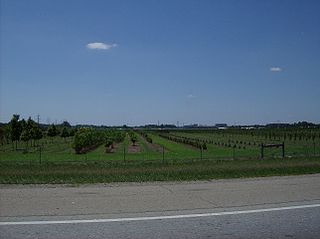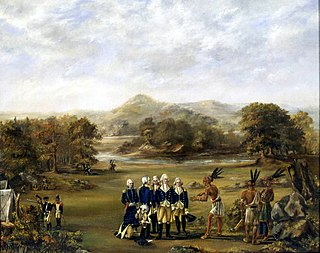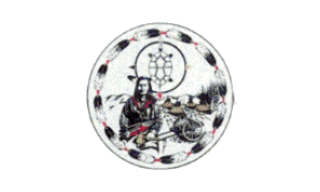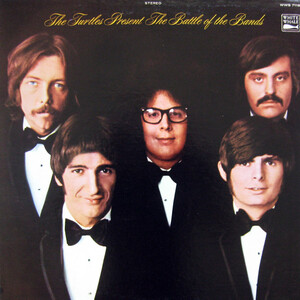
Turtles are diapsids of the order Testudines characterized by a special bony or cartilaginous shell developed from their ribs and acting as a shield. "Turtle" may refer to the order as a whole or to fresh-water and sea-dwelling testudines. The order Testudines includes both extant (living) and extinct species. The earliest known members of this group date from 220 million years ago, making turtles one of the oldest reptile groups and a more ancient group than snakes or crocodilians. Of the 356 known species alive today, some are highly endangered.

The Teenage Mutant Ninja Turtles are four fictional teenaged anthropomorphic turtles named after Italian artists of the Renaissance. They were trained by their anthropomorphic rat sensei in the art of ninjutsu. From their home in the sewers of New York City, they battle petty criminals, evil overlords, mutated creatures, and alien invaders while attempting to remain hidden from society. They were created by Kevin Eastman and Peter Laird.
Blue Jacket or Weyapiersenwah was a war chief of the Shawnee people, known for his militant defense of Shawnee lands in the Ohio Country. Perhaps the pre-eminent American Indian leader in the Northwest Indian War, in which a pantribal confederacy fought several battles with the nascent United States, he was an important predecessor of the famous Shawnee leader Tecumseh.

The clade Sauria was traditionally a suborder for lizards which originally comprised crocodilians too. It has been redefined as the group containing the most recent common ancestor of archosaurs and lepidosaurs and all its descendants; as such it was commonly thought that Sauria is a crowned-base grouping of diapsids. However, recent genomic studies and comprehensive studies in the fossil record suggest that turtles are closely related to archosaurs, not to parareptiles as previously thought. Sauria can be seen as a crowned-group of all modern reptiles within the larger total group Sauropsida, which also contains various stem-reptile groups.

The Battle of Fallen Timbers was the final battle of the Northwest Indian War, a struggle between Native American tribes affiliated with the Western Confederacy and a British company, against the United States for control of the Northwest Territory. The battle took place amid trees toppled by a tornado just north of the Maumee River in northwestern Ohio at the site of the present-day city of Maumee. Gen. "Mad" Anthony Wayne's Legion of the United States along with Gen. Charles Scott's Kentucky Militia were victorious against a combined Native American force of Shawnee under Blue Jacket, Miami under Little Turtle, and numerous others. The battle ended major hostilities in the region. This resulted in British and Indian withdrawal from the southern Great Lakes, western Ohio and northeastern Indiana following the Treaty of Greenville and Jay's Treaty.

The Fort Wayne Old City Hall Building in downtown Fort Wayne, Indiana operates as a museum known as The History Center, and has served as headquarters for the Allen County–Fort Wayne Historical Society since 1980. The Richardsonian Romanesque style sandstone building was designed by the architectural firm Wing & Mahurin and built in 1893. It served as a functioning city hall for the city until 1971 when local officials moved to the City-County Building.

"Turtles all the way down" is an expression of the problem of infinite regress. The saying alludes to the mythological idea of a World Turtle that supports the earth on its back. It suggests that this turtle rests on the back of an even larger turtle, which itself is part of a column of increasingly large turtles that continues indefinitely.

Turtlecreek Township is one of the eleven townships of Warren County, Ohio, United States. It is in the central part of the county and surrounds the county seat of Lebanon. Turtlecreek is the largest township in the county, originally containing sixty-three whole and seven fractional sections. It had a population of 12,617 in 2000, up from 10,383 in 1990. Of those, 12,114 lived in the unincorporated part of the township, 456 in Middletown, and 47 in Monroe.

The Northwest Indian War (1785–1795), also known as the Ohio War, Little Turtle's War, and by other names, was a war between the United States and a confederation of numerous Native American tribes, with support from the British, for control of the Northwest Territory. It followed centuries of conflict over this territory, first among Native American tribes, and then with the added shifting alliances among the tribes and the European powers of France and Great Britain, and their colonials.

William Wells, also known as Apekonit, was the son-in-law of Chief Little Turtle of the Miami. He fought for the Miami in the Northwest Indian War. During the course of that war, he became a United States Army officer, and also served in the War of 1812.

The green sea turtle, also known as the green turtle, black (sea) turtle or Pacific green turtle, is a species of large sea turtle of the family Cheloniidae. It is the only species in the genus Chelonia. Its range extends throughout tropical and subtropical seas around the world, with two distinct populations in the Atlantic and Pacific Oceans, but it is also found in the Indian Ocean. The common name refers to the usually green fat found beneath its carapace, not to the color of its carapace, which is olive to black.

The Turtle Mountain Band of Chippewa Indians is a Native American tribe of Ojibwa and Métis peoples, based on the Turtle Mountain Indian Reservation in Belcourt, North Dakota. The tribe has 30,000 enrolled members. A population of 5,815 reside on the main reservation and another 2,516 reside on off-reservation trust land. It is federally recognized and Jamie Azure is the current Tribal Chairman elected for 2016 to 2018 term.
The Little Shell Band of Chippewa Native Americans were the historic sub-band of the Pembina Band of Chippewa Indians led by Chief Little Shell in the nineteenth century. Based in North Dakota around the Pembina River, they were part of the large Anishinaabe (Ojibwe) tribe that occupied territory west of the Great Lakes by that time. Many had partial European ancestry from intermarriage by French-Canadian fur traders and trappers. Some began to identify as Métis, today recognized as one of the Indigenous Peoples of Canada. Located in the 17th century in the areas around the Great Lakes, they gradually moved west into North Dakota and Montana.

The Turtles Present the Battle of the Bands is the fourth studio album released by the American rock band the Turtles. Produced by Chip Douglas, it was released in November 1968 by White Whale Records. It includes John Barbata's final recorded performances with the band; he left shortly after its release to join Crosby, Stills, Nash & Young. Barbata's eventual replacement, former Spanky and Our Gang drummer John Seiter, also contributed to the album. Some issues of the album were retitled Elenore.

The Mary River turtle is an endangered short-necked turtle that is endemic to the Mary River in south-east Queensland, Australia.

Turtle Mountain Indian Reservation is an Indian Reservation located primarily in northern North Dakota, United States. It is the land base for the Turtle Mountain Band of Chippewa Indians.
Turtle Creek is a 13.7-mile-long (22.0 km) tributary of the Little Miami River in Turtlecreek Township, Warren County, Ohio, which takes its name from this creek. Turtle Creek is named for Chief Little Turtle, of the Miami Indian Tribe Turtle Creek is a tributary within the Little Miami and Ohio River watersheds.

Parkdale No. 498 is a rural municipality in the Canadian province of Saskatchewan. The municipality is located in Census Division 17 which is a part of SARM Division 6. The seat of the municipality is located in the hamlet of Glaslyn.
















